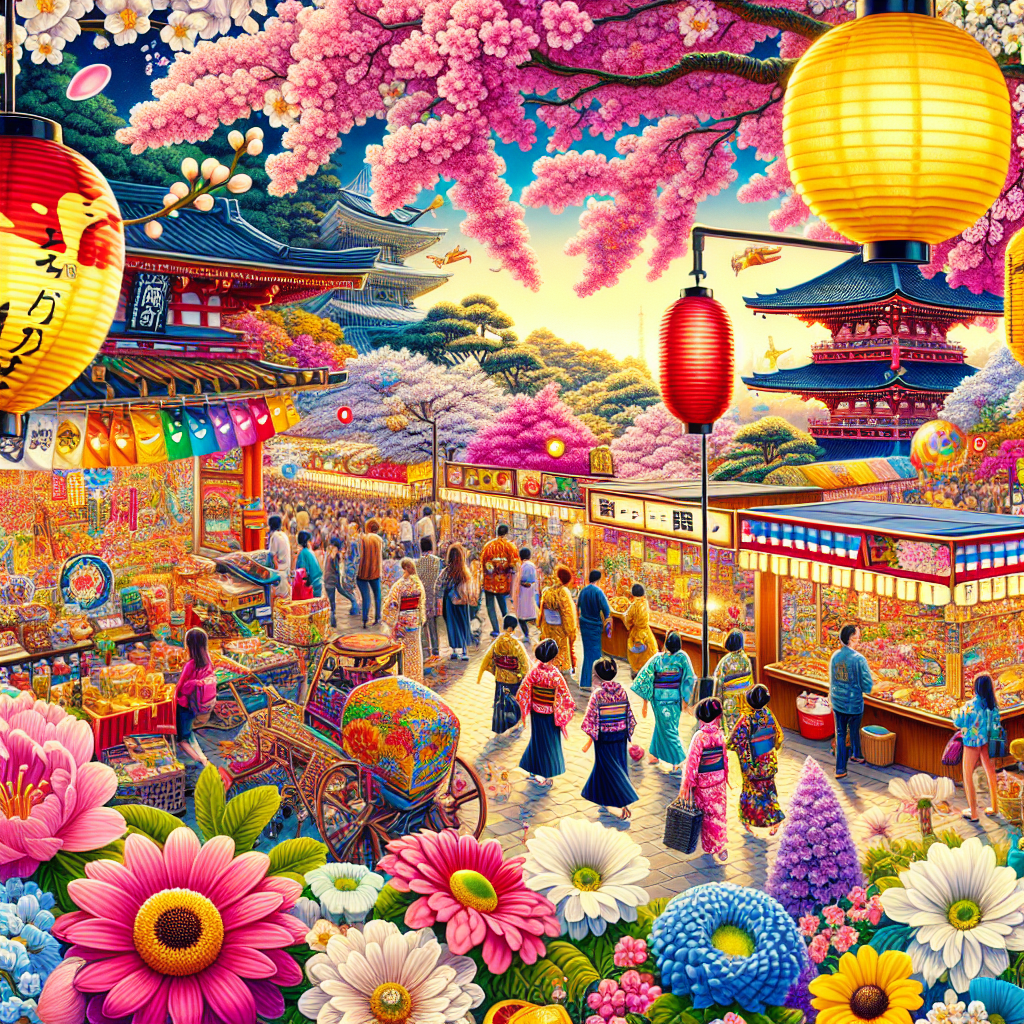Seasonal Splendors: When to Visit Japan for Festivals, Flowers, and Fun
Japan, a country where traditions intertwine with modernity, is a land of enchanting seasonal transformations. Each season in Japan is a splendid showcase of nature’s beauty and cultural festivities, making it a year-round destination for travelers. Whether it’s the delicate pink sakura (cherry blossoms) of spring, the vibrant summer festivals, the fiery red maples of autumn, or the serene snowscapes of winter, Japan offers a unique experience that caters to every kind of traveler. Let’s explore the best times to visit Japan to immerse yourself in its festivals, flowers, and endless fun.
Spring (March to May): A Symphony of Cherry Blossoms
Spring in Japan is synonymous with cherry blossoms. The entire country celebrates the fleeting beauty of sakura, starting in Okinawa in late January and reaching Hokkaido by early May. The peak bloom (sakura zensen) varies by location, but typically, Tokyo, Kyoto, and most of Honshu enjoy sakura in late March to early April. The Hanami (flower viewing) festivals are a must-attend, where locals and tourists alike gather under cherry blossom trees with food, drinks, and good company.
– Key Events: The Kyoto Cherry Blossom Festival, Hirosaki Cherry Blossom Festival, and Takayama Spring Festival.
– Best Places: Shinjuku Gyoen (Tokyo), Philosopher’s Path (Kyoto), and Hirosaki Park (Aomori).
Summer (June to August): Festivals Galore
Summer in Japan is a time of vibrant festivals and fireworks. Despite the hot and humid weather, the energy and excitement of summer matsuri (festivals) are contagious. From the colorful floats of the Gion Matsuri in Kyoto to the spirited dance of the Awa Odori in Tokushima, there’s an array of events showcasing Japan’s rich cultural tapestry.
– Key Events: Gion Matsuri (Kyoto), Awa Odori (Tokushima), and Sumida River Fireworks Festival (Tokyo).
– Best Places: Almost every region has its unique summer festival, but Kyoto, Tokushima, and Tokyo are standout destinations.
Autumn (September to November): A Canvas of Fall Colors
Autumn is a magical time in Japan when the landscape is painted with vivid shades of red, orange, and yellow. The koyo (autumn leaves) season is as popular as the cherry blossom season, with many people traveling across the country to find the best spots for leaf-peeping. The weather is also pleasant, with cooler temperatures and little rainfall.
– Key Events: Jidai Matsuri (Kyoto), Takayama Autumn Festival, and the Koyo viewing festivals.
– Best Places: Kyoto’s temples, Nikko National Park, and the Japanese Alps are spectacular in autumn.
Winter (December to February): Snow Festivals and Onsens
Winter in Japan is a wonderland of snow, especially in the northern regions like Hokkaido and the Japanese Alps. The Sapporo Snow Festival is a highlight, featuring giant snow and ice sculptures. Winter is also the perfect time to experience Japan’s onsen (hot springs), particularly in snowy settings where the contrast between the hot baths and the cold air is exhilarating.
– Key Events: Sapporo Snow Festival (Hokkaido), Nozawa Fire Festival, and Otaru Snow Light Path Festival.
– Best Places: Sapporo for the snow festival, Nagano for skiing and onsens, and Kanazawa for its winter seafood.
FAQs
Q: When is the best time to visit Japan for cherry blossoms?
A: Late March to early April for most of Japan, though this can vary. It’s advisable to check annual forecasts.
Q: Are summer festivals in Japan suitable for all ages?
A: Absolutely, summer festivals in Japan offer entertainment for the entire family, from traditional dances and parades to food stalls and games.
Q: What should I wear during autumn and winter visits?
A: Autumn requires light layers as the weather can be unpredictable. For winter, especially in northern areas, heavy coats, scarves, and boots are necessary due to snow and low temperatures.
Q: How crowded are the cherry blossom and autumn foliage seasons?
A: These seasons are extremely popular, both with locals and tourists, so expect crowded spots, especially in famous locations. Early mornings or weekdays might be less crowded.
Q: Can I participate in festivals as a non-Japanese speaker?
A: Yes, many festivals are welcoming to international visitors, and participating or observing doesn’t require Japanese language skills. However, learning a few basic phrases can enhance your experience.
Q: Is it easy to travel between regions to experience different events?
A: Japan’s efficient public transportation system, particularly the Shinkansen (bullet train), makes it relatively easy to travel between cities and regions to catch various festivals and seasonal highlights.
Japan’s seasonal splendors offer a kaleidoscope of experiences that cater to all senses. Planning your visit around these times not only allows you to witness the natural beauty but also provides a deeper understanding of Japanese culture and traditions through its festivals. Each season has its unique charm, promising unforgettable memories of festivals, flowers, and fun.
